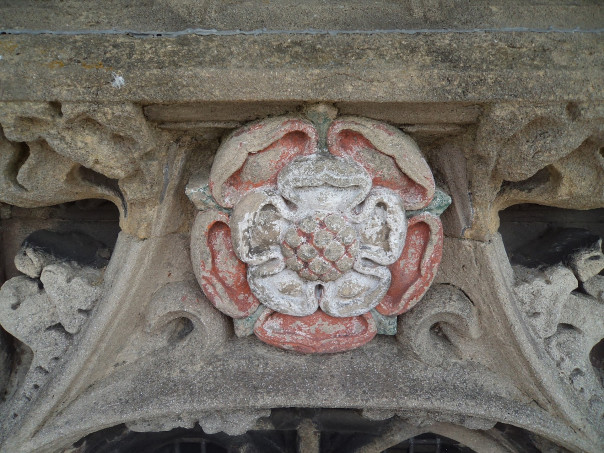This week I’m going to focus exclusively on Tudors & Stuarts 2023, but first a date for your diaries. The Kent History Showcase 2023, organised by KAS, the Maison Dieu and Dover Museum, which will include CKHH and Dr Diane Heath’s NHLF-funded ‘Medieval Animals Heritage’, will take place at Dover Museum and Market Square on Saturday 3 June.
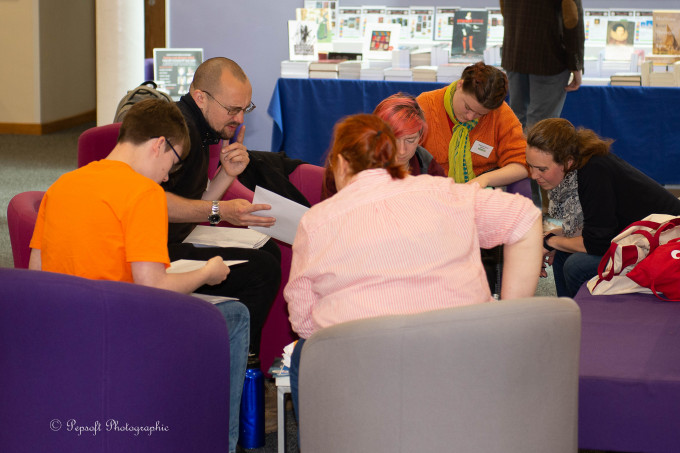
So to Tudors & Stuarts 2023, and as last year when the effects of the pandemic and the beginning of the cost of living crisis had started to bite, this year in the run-up we had also experienced issues around massive inflation and the possibility of rail strikes. Consequently, I am extremely grateful to those who enthusiastically keep coming to our History Weekends, as well as those who found us for the first time.
Furthermore, before I thank the many people who helped to make it yet again a great celebration of history, I thought it would be good to take just a few comments from the questionnaires of those who attended. In response to ‘what did you like about the Weekend’: we had “the quality and professionalism of the speakers and their command of the subject matter”, as well as “that it happened in person this year was amazing – also that the speakers have all been excellent, exceptionally knowledgeable and promoted great discussion.” The breadth of subjects was similarly mentioned by many – exemplified by Professor Richard Hoyle’s and Amy Licence’s intriguing explorations of Tudor monarchy, Professor Kenneth Fincham’s analysis of Bishop Bayley, a ‘troublesome’ prelate (from James I’s perspective), and Dr Elaine Leong’s assessment of ‘new’ medical technologies in Stuart England, as was the idea that these talks “invited us to explore further”, “were thought provoking”, offered “introductions to sources/people possibly previously unknown or unfamiliar” and “got the brain working”. The tours, too, received high praise, and “Paul Bennett is amazing” came up several times.
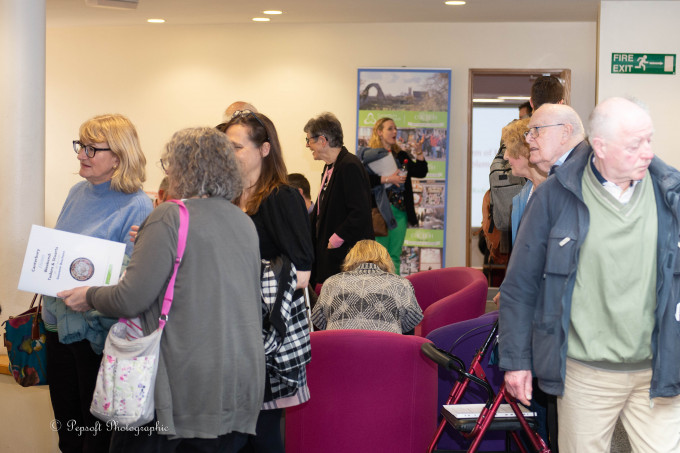
Beyond the lectures, Craig and the bookshop received accolades such as in response to ‘what was your favourite thing’, we have “Difficult to say. I enjoyed the opportunity to meet people and must give a special thank you to the University bookshop”, “Listening to the talks and the books for sale” and “The amazing bookstall!” This was all in addition to Craig’s promotion of Tudors & Stuarts over several weeks through the window display, the very large posters on sandwich boards outside the bookshop and similarly large posters beside the way to Touchdown. In fact, for anyone anywhere near the centre of campus it would have been impossible not to have known that this History Weekend was happening!

There was similar praise for the Welcome Team Members, our great band of volunteers who were seen as “friendly and helpful”, while another audience member said “You should be congratulated once again for a wonderful weekend. The people of Kent are spoilt”. We also had “It’s fantastic” and “Very well organised throughout.” Now several of the postgraduate volunteers have been recipients of funds from the Ian Coulson Memorial Postgraduate Award Fund and hopefully yet again the History Weekend will give a boost to this to enable the Centre for Kent History & Heritage to aid yet more postgraduates at Canterbury Christ Church who want to study Kent history.
To make such Weekends a reality, we are grateful for the help of many people, and I want to start by thanking Kellie Hogben in the Box Office, the Web team, the AV team and those in Hospitality who opened the kiosk in Augustine House over the weekend. Craig and the CCCU Bookshop have already been mentioned but I want to record a gigantic thank you to him and his team for everything they have done this year and every year, Craig you are amazing!

This year we had a great band of student helpers, from our two ‘honorary CCCU students’ JJ and Benedict – who said you cannot engage teenagers!, to Greg, a 1st year undergraduate, Eleanor and Daniel, our 2nd year undergraduates, Eli, Leo and Marek, our 3rd year undergraduates, and our doctoral students: Kieron, Jason, Peter and Jane. Several Christ Church staff chaired sessions or looked after our tour groups, so many thanks to Matthew Crockatt, Drs David Budgen, Maria Diemling, Pip Gregory, David Hitchcock and Astrid Stilma, and a very special thank you to Dr Diane Heath, my co-organiser and the designer of the souvenir brochure, and to Dr Claire Bartram, co-director of CKHH.
I also want to record my thanks to all of our fantastic speakers, as well as our two tour leaders, Cressida Williams in Canterbury Cathedral Archives and Professor Paul Bennett, the retired Director of Canterbury Archaeological Trust, we are very grateful that you were prepared to give up your time and for some travel considerable distances, for example Professor Alec Ryrie came all the way from Durham to give a brilliant presentation.
Finally, I want to thank our audience members, those who have kept faith with us, including those who have come annually since 2016, and those who came this year for the first time. Moreover, it was splendid to be able to welcome the Lord Mayor to the opening lecture on Friday evening and we are very grateful that she was able to fit us into her busy schedule. While our core audience remains those from Kent, we had people from London and southern counties including Sussex and Gloucestershire. Going beyond England within the British Isles there were people from Wales, and from even further afield people from the Netherlands and an American couple who had spotted the Weekend while on holiday in this country. They are keen to tie in their holiday next year to the Medieval Canterbury Weekend 2024 which I think will be Friday 26th to Sunday 28th April.
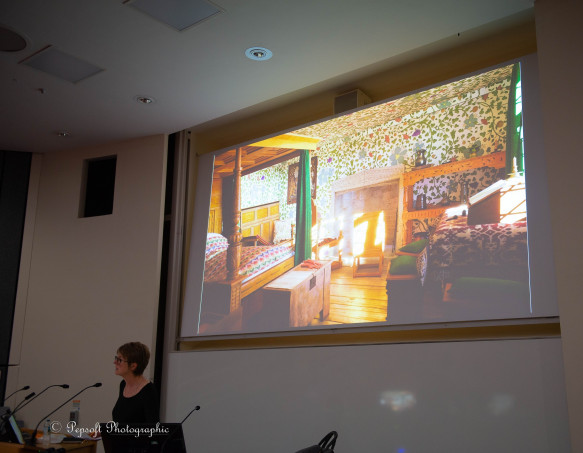
So what did people experience at Tudors & Stuarts 2023, and the answer is a brilliant array of presentations. Now I gave one talk, chaired five and managed to attend another two each of which would justify a blog report in its own right, but that’s not feasible and instead I’m just going to pick out one or two things from those I chaired and those where I attended as an audience member to offer a flavour of the riches on offer throughout the Weekend.
Our opening presentation was given by Professor Catherine Richardson on the early modern household and the fascinating distribution of household furniture and objects around the house as revealed in inventories, whether we are looking at the hall, the parlour or the various chambers, as well as ‘new’ rooms such as the study and the attached rather than the detached kitchen. Furthermore, looking specifically at the linking of space and time through the concept of leisure, the places where different musical instruments and books were to be found in the house, and therefore matters relating to comfort, lighting – natural and artificial in the form of candles, and conviviality. Thus, Catherine’s most recent project on the use of digitisation in relation to a Tudor house from Reigate as a means to ‘experience’ such spaces and objects was extremely exciting, and especially how this will be used by schools was a great way to demonstrate engagement and bridging the gap of 500 years.
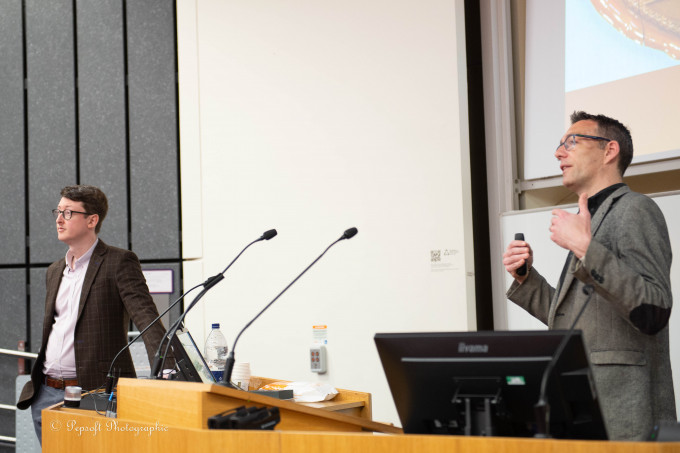
My next concerns the Revd Professor Jessica Malay and her assessment of the life of the young Lady Anne Clifford at the court of Elizabeth I. For as a fledgling courtier she was dependent on her powerful maternal aunt, as well as her mother as she negotiated what was required in the game of patronage and preferment at the royal court. For Anne, life was made more complicated by the sea-faring endeavours of her father George Clifford, who while energetic was hardly successful on the high seas, which meant having the queen’s favour was ever more vital for the sake of the family’s fortunes. As Jessica said, such a time must have had a profound influence on the young Anne and may in large part have influenced her concern to highlight the important role female members of the family had played since the Norman Conquest in the establishment and prominence of the Cliffords nationally and in ‘the lands of mine inheritance’.
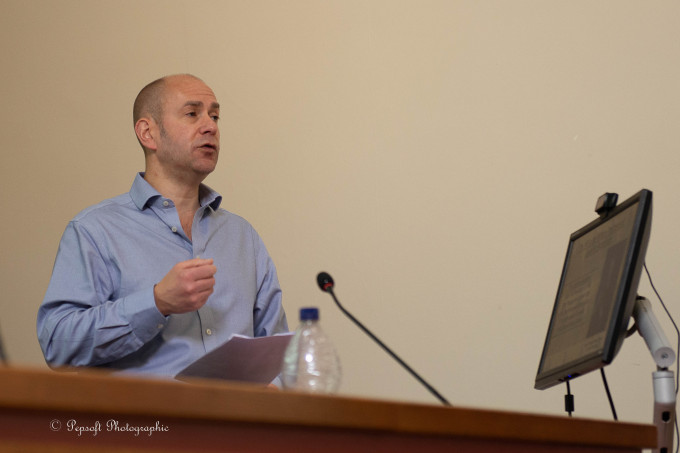
Turning to another sea-faring venture, Dr Craig Lambert provided a fascinating case study concerning Sir John Hawkins’ attempt to gain compensation from the Spanish crown for the goods, ships and slaves he had lost following a naval engagement with Spanish vessels at San Juan de Ulua. The specific part of this case Craig focused on was the role of William Fowler who provided vital testimony at the High Court of the Admiralty concerning the detailed valuation of Hawkins’ and his other backers’ losses. For through his research into the identity of William Fowler, Craig has discovered that for some nationality was amazingly fluid in official terms and that individuals could find themselves labelled as both native and foreign (alien). Moreover, how much this mattered in terms of relationships similarly varied, and whereas foreign was viewed with suspicion if not downright hostility in London, in ports elsewhere such men were more readily accepted, becoming on occasion pillars of the local community.

Keeping to Tudor society, Professor Steven Gunn offered a great presentation on accidental death in Kent. Regular readers of the CKHH blog will already know about the dangers of being attacked by a bear and falling into rivers, but Steven demonstrated how such records can highlight the range of regular activities people engaged in, such as the frequency women fetched water or of boys driving carts. Furthermore, while fruit growing was certainly important in Kent, from the number of people who fell out of trees, pears appear to have been more widespread compared to apple trees; and being involved in cloth production was far safer than either milling or quarrying. Turning to leisure pursuits, at times football could be dangerous, but then so was wrestling, especially when one or both of those involved forgot to put aside their knife first. Of course, guns have always been seen as dangerous, but in some cases more for those firing than those fired at, and Kent also provides important evidence of new industrial practices through a case of an accident at a blast furnace in 1565 at Tonbridge.
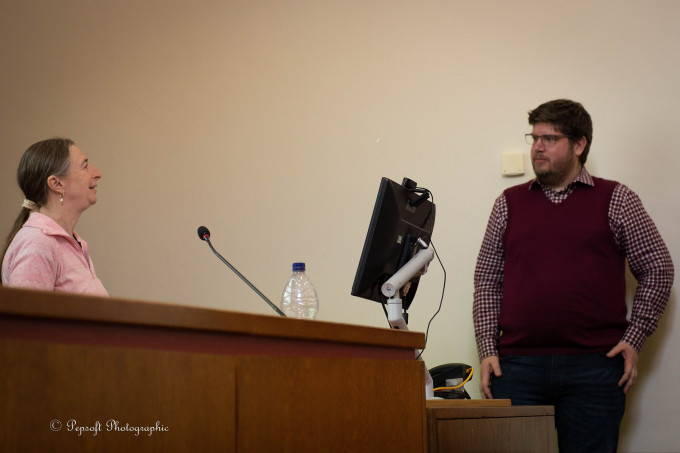
Now to Sunday, and it was fascinating to hear Dr Maria Diemling’s lecture on Jewish dietary laws and how these ideas were used visually against Jews on ethnic/religious grounds in the early modern period. On a specifically personal note, thanks Maria for alerting us to that 13th-century image on a church in Wittenberg, I hope you don’t mind but I’m going to use it in my ‘Rethinking the Medieval Pig’ presentation for Diane Heath’s ‘Skin and Bone, Wood and Stone’ conference at the end of June. Also exceedingly interesting were the regulations surrounding preparing, cooking and eating, the separation in space and time of meat and dairy crockery and cutlery, and the marking of spoons accordingly. Similarly, the complex use of communal ovens involving Christians and Jews for the baking of leavened and unleavened bread to avoid cross-contamination, as well as dishes containing either allowed meats or dairy products. All of this Maria neatly introduced and summed up through her use of Shylock’s response to Bassanio in The Merchant of Venice, and thus Shakespeare’s image that while early modern Christians and Jews might meet in the marketplace, no Jew would pray, eat or drink in the company of a Christian.
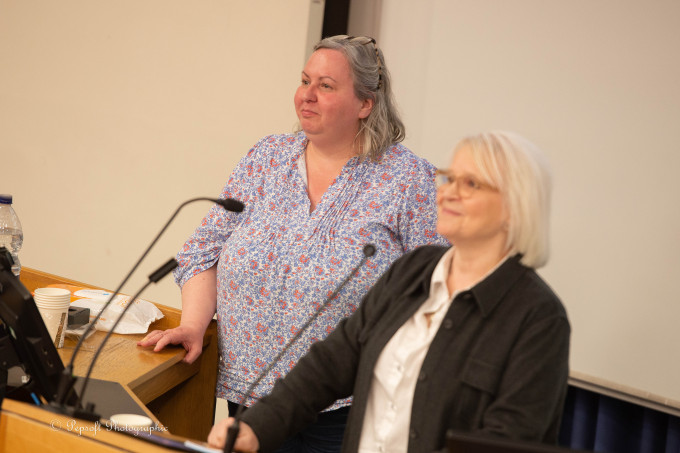
Keeping with the topic of fundamental differences within early modern society, albeit within English Protestant society, in the next session Dr Rebecca Warren provided her audience with insights into the complex world of radical religion during the English Civil War and Cromwellian Protectorate. For while there had been a few before this derogatorily referred to as Puritans, their numbers and range of sects exploded in the 1640s as much of the framework of the Anglican church first came under attack and then collapsed. The loss of state/church censorship opened the floodgates to a pamphlet war, and while what remained of the established church and churchmen attempted to fight back, this was more a rear-guard action. All of this Rebecca thoughtfully took her audience through, thereby providing a clear, and carefully nuanced understanding of what seemingly attracted people to turn away from the religious beliefs and practices of their parents and grandparents.
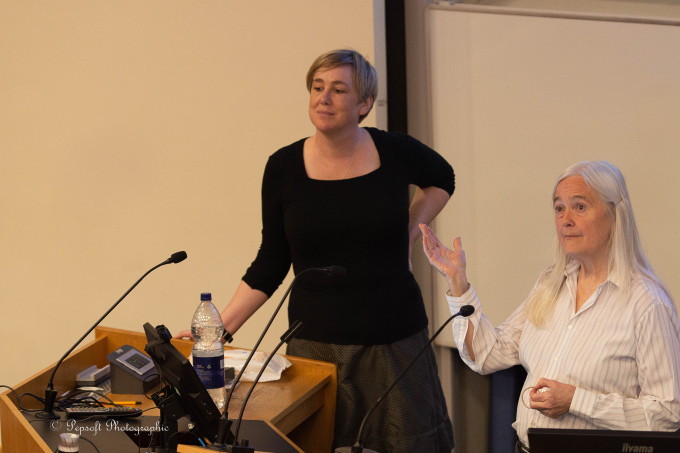
Being unable to be in two places at once and therefore missing Dr Onyeka Nubia’s reportedly excellent presentation in The Michael Berry Lecture Theatre, I shall conclude with the equally brilliant final presentation in The Mabb Lovell Court Room by Imogen Corrigan because that’s what I was chairing. Being pretty unfamiliar with the artistic work of El Greco, it was a complete revelation to see images of the diversity of his work and how he had developed from being a master Greek icon painter even in his early twenties. The range of his work is stunning, and Imogen took her audience on a voyage of discovery as she knowledgeably explained the different phases, the apparent level of influence of other great artists, as well as bringing out the human side of a genius who knew his worth and expected to be recompensed accordingly.
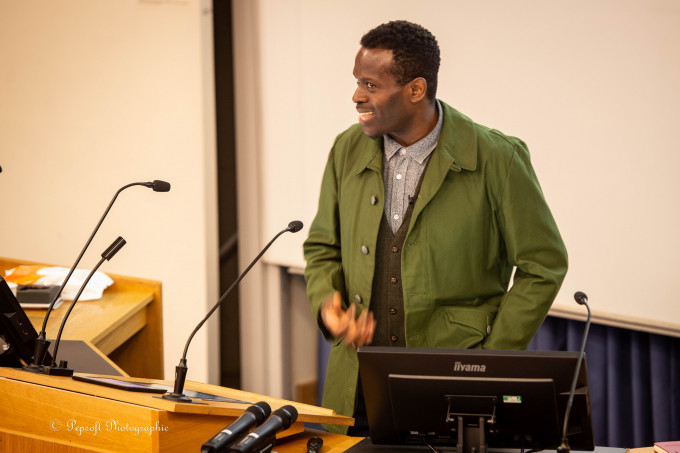
Thus, this was a great way in both lecture theatres to conclude what had been another spectacularly successful History Weekend – thanks everyone involved! And if you didn’t manage to come to Canterbury to see and hear our speakers, the webpages are still there [ https://www.canterbury.ac.uk/tudors-stuarts ] and we hope to offer a legacy of Tudors & Stuarts 2023 soon on the CKHH website.
 Centre for Kent History and Heritage
Centre for Kent History and Heritage Sheila Sweetinburgh
Sheila Sweetinburgh 1388
1388